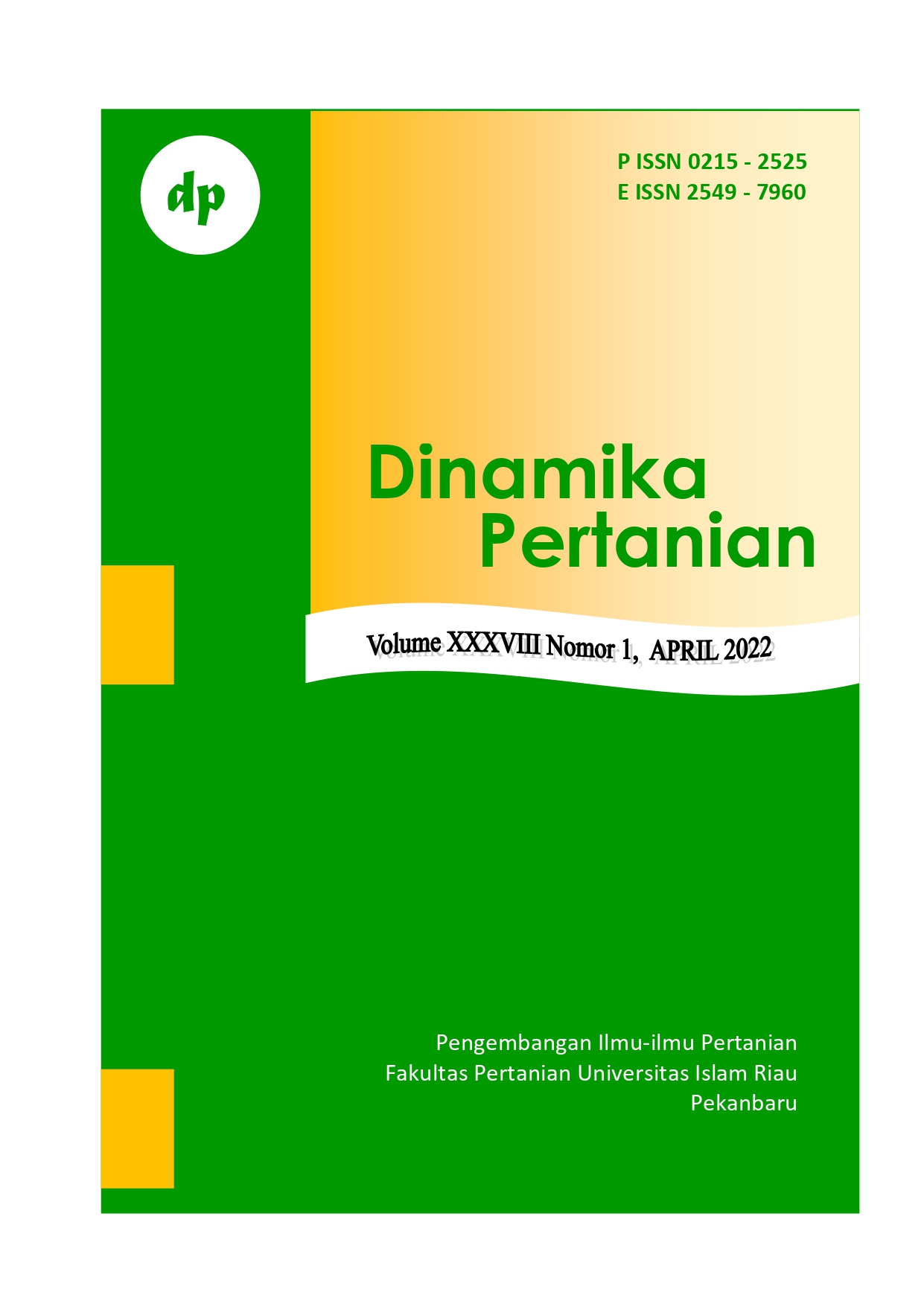UJI EFEKTIVITAS EKSTRAK TEPUNG BUAH SIRIH HUTAN (Piper adumcum L.) UNTUK MENGENDALIKAN Helopeltis theivora
DOI:
https://doi.org/10.25299/dp.2022.vol38(1).10428Keywords:
Botanical Pesticide, Cacao Plant, Helopeltis theivora, Piper aduncum LAbstract
The main pest that attacks cocoa crops is Helopeltis theivora Waterhouse. The Helopeltis theivora pest can cause a loss of 60%. Helopeltis theivora pest control generally still uses synthetic chemical insecticides because they can control pests quickly and efficiently. The control using botanical pesticide extracts of forest betel fruit (Piper aduncum L.) is an alternative to overcome the impacts caused by the use of synthetic insecticides. This study aimed to increase the concentration of forest betel powder extract to obtain an effective concentration to control Helopeltis theivora. The research was conducted at the Laboratory of Plant Pests and Experimental Farm, Faculty of Agriculture, Riau University. This study was conducted from August to September 2020. The research used a completely randomized design (CRD) with five treatments and four replications to obtain 24 experimental units. The treatments given were the concentration of forest betel fruit powder extract of 6%, 7%, 8%, 9%, and 10%. The results showed that increasing the concentration could increase the effectiveness of forest betel powder extract (Piper aduncum L.) to control Helopeltis theivora which at a concentration of 8% forest betel flour can cause total mortality of 87,50% with an initial time of death at 9 hours after application and lethal time 50 at 39 hours after application.







